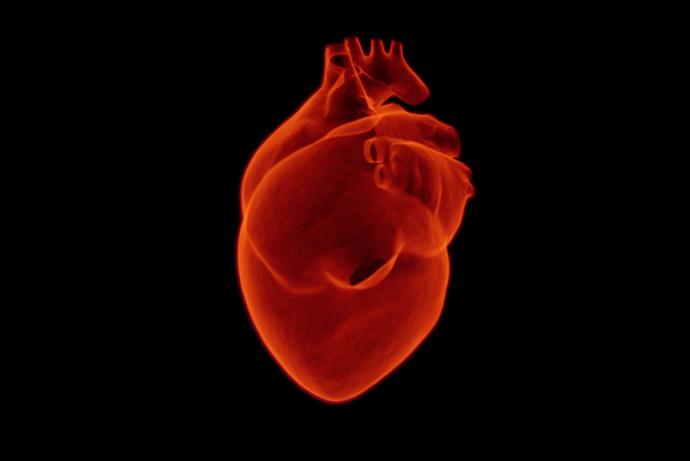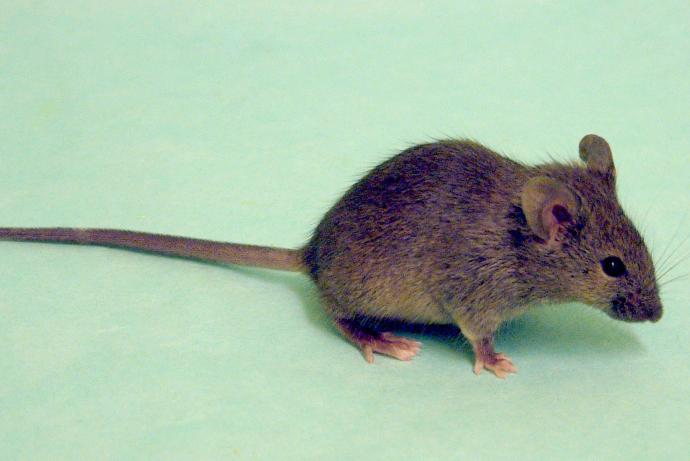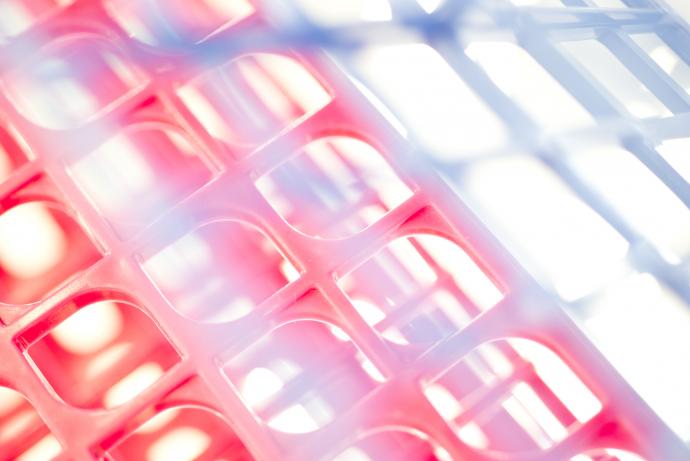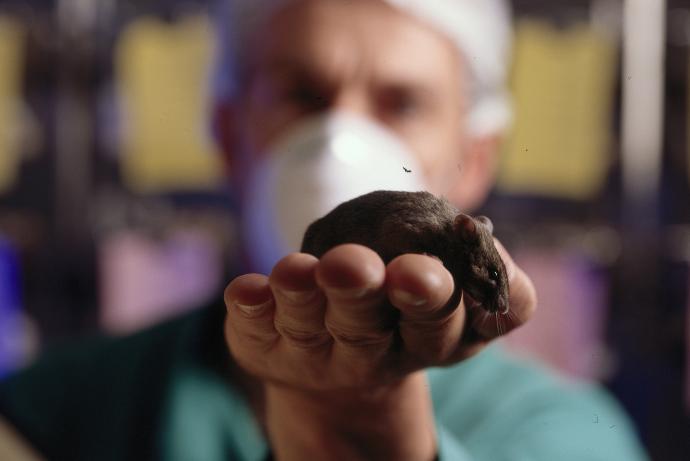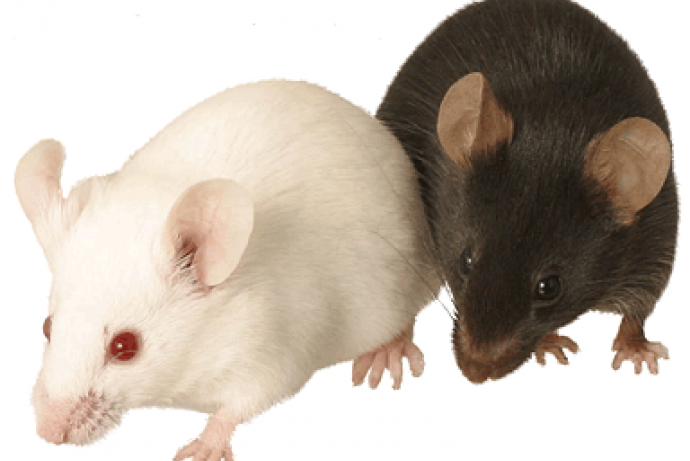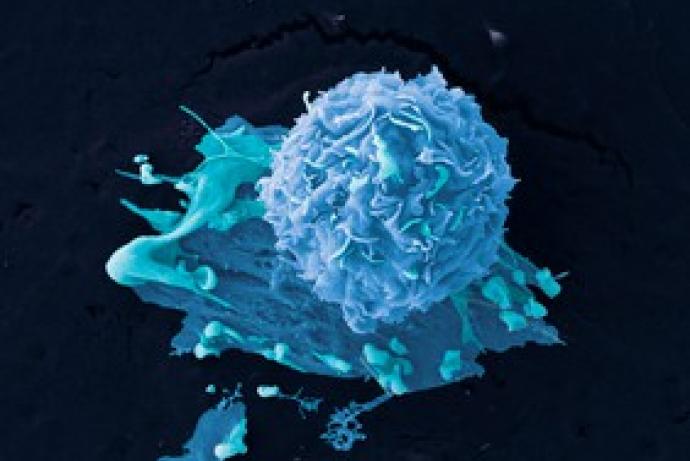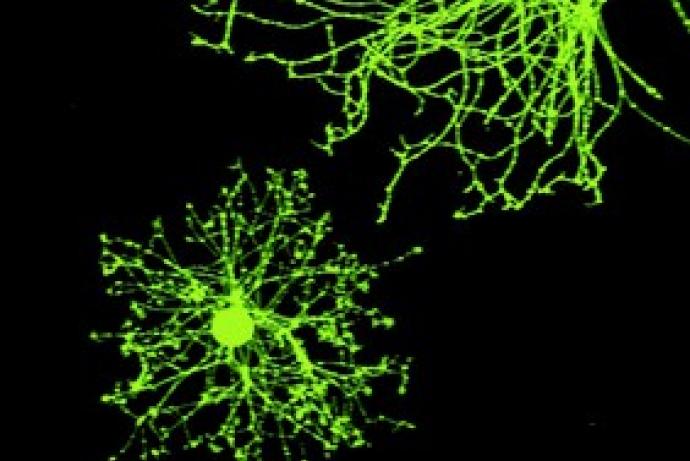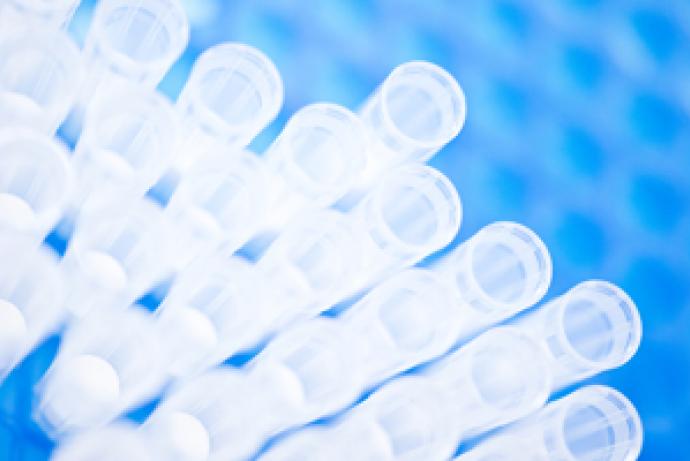InMutaGene
The aim of this Challenge is to develop in vitro/in silico assay(s) that can be used singly or in combination to improve risk assessment for GT products. These assays should be applicable to the assessment of a wide range of vector types (in addition to the ‘first generation’ gamma-retroviral vectors and autologous bone marrow-derived stem cells), different target tissues and modes of delivery and emerging technologies (e.g. gene editing).
10 years of CRACK IT webinar: Assessing the genotoxic potential of gene therapy products in vitro
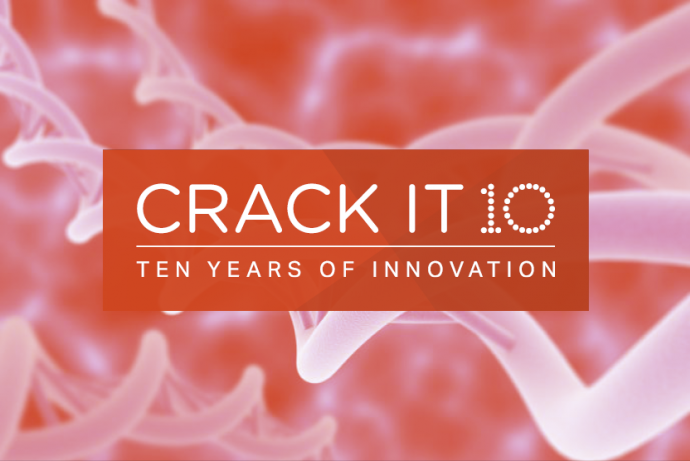
In November 2021, we held a webinar highlighting TestAVec, the company spun-out to commercialise the research developed during the InMutagene Challenge. Speakers included Dr Mike Themis (TestAVec), who led the team that delivered the Challenge, and Dr Silvana Libertini (Novartis), one of the Challenge Sponsors. The recording of the webinar is now available online, as part of our 10 years of CRACK IT celebrations.
Product launched
TestAVec offers hInGeTox as a non-clinical viral vector safety assessment service for gene therapy producers.
Challenge completed
The InMutaGene Challenge led by Dr Manfred Schmidt from GeneWerk GmbH has been successfully completed. In the process, the team developed a human induced pluripotent stem cell (iPSC) in vitro genotoxicity testing platform (hInGeTox) and established the spin-out company TestAVec Ltd.
Further information can be found on the TestAVec website.
GSK funded PhD studentship
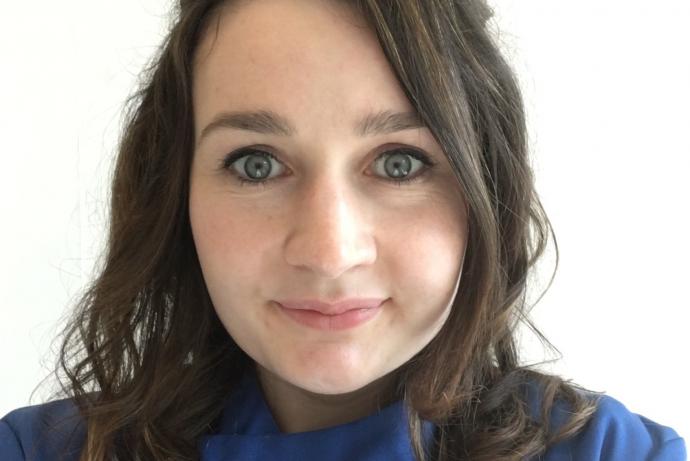
GSK has provided a fully funded a PhD studentship to Charlotte Kay as in-kind support to the InMutaGene Challenge. Supervised by Dr Thomas Southgate and Dr Rhiannon Lowe (GSK), and Dr Michael Themis (Brunel University supervisor), Charlotte is working on a project assessing safety considerations of CAR-T therapies. This project extends the scope and timelines of the CRACK IT Challenge and provides a platform for long term links between GSK and Brunel.
Publication
Scholz SJ et al. (2017). Lentiviral Vector Promoter is Decisive for Aberrant Transcript Formation. Human gene therapy 1;28(10):875-85. doi:10.1089/hum.2017.162.
New website launched
GeneWerk GmbH launches website to showcase progress on the CRACK IT Challenge InMutaGene.
Conference presentation
British Society for Gene and Cell Therapy Annual Meeting (Cardiff, UK)
A human iPS cell model for gene therapy vector safety evaluation.
Phase 2 awarded
A team led by Dr Manfred Schmidt from GeneWerk GmbH has been awarded £700k to deliver the project: A human iPS cell model for gene therapy vector safety evaluation.
Phase 1 awarded
Three Phase 1 Awards were made to project teams led by:
- Dr Luca Biasco, Ospedale San Raffaele, £84,115.
- Professor Axel Schambach, Hannover Medical School, £100,000.
- Dr Michael Themis, Brunel University, £99,542.
Challenge launched
Sponsored by GSK and Novartis, the InMutaGene Challenge aims to develop a human relevant risk assessment platform that will improve the safety of novel gene therapy products and reduce the reliance on animal models.
Background
Gene therapy (GT) is now emerging as a medical reality, with clinical efficacy demonstrated in a number of GT trials for rare diseases. Over 1,800 GT clinical trials have now been initiated or approved worldwide, and whilst most are phase l/ll, an increasing number of products are entering phase ll and lll trials each year (Ginn et al., 2013). Based on this progress and the success of Glybera, the first licensed GT product in Europe, further GT initiatives are underway in a number of genetic disorders, malignancies and neurodegenerative disorders.
A wide variety of GT products are being developed to replace or disrupt existing genes. Generally the therapeutic DNA sequence is delivered via a vector system. Some vectors integrate permanently into the genome to provide ex vivo or in vivo gene addition/correction and represent a promising tool for the long-term treatment of inherited and acquired disorders. The integrated sequences are then transmitted to the cell progeny during cell replication. Insertional mutagenesis leading to oncogenesis is a recognised GT safety concern, which has manifested in a number of trials involving ex vivo transduction of haematopoietic stem cells with gamma-retroviral vectors (Howe et al., 2008; Hacein-Bey-Abina et al., 2008; Braun et al., 2014). However, the extent of this risk following other vector types, target cells and/or in vivo methods of administration is not clear. Understanding the risk factors associated with insertional mutagenesis of diverse gene transfer systems is a crucial, outstanding issue for the whole GT field. The nature of the target cells, the vector design, the mode of delivery and the disease background can affect insertional properties of the vector and, potentially, the likelihood of oncogenesis (Rothe et al., 2014; Chaungfen et al., 2011). Vector integration and clonality assays (which measure the diversity of such integrations in a cell population) are standard tools in the safety evaluation of GT products in both non-clinical and clinical studies. However, recently, the need to evaluate other factors (for example, epigenetic factors) that might influence the transition from a mutagenic to an oncogenic event has been highlighted.
As GT becomes a clinical reality, there is an increasing demand for non-clinical tests to assess the safety of the therapeutic strategy for the patient. A robust in vitro/in silico tool to evaluate the risk of insertional mutagenesis/oncogenesis will support risk assessment while limiting the use of animals. A number of non-clinical assays (both in vitro and in vivo) for the assessment of mutagenicity and oncogenicity of GT approaches have been developed. Approaches include the in vitro immortalisation assay and the Jurkat/LMO2 cell line model. Although these are sensitive assays, they are limited to specific oncogenes, cell lineages and/or mechanisms of genotoxicity. Hence, they are more useful for screening of novel vectors for inherent genotoxicity by specific mechanisms rather than providing an estimate of risk for oncogenicity.
GT based on direct local or systemic administration of the transgene vector are mainly non-clinically supported by in vivo studies in wildtype rodents or in non-rodent species provided they are relevant with respect to transgene insertion, function and biodistribution. In some cases KO mice deficient for the transgene function may be of value. Therapies applying ex vivo genetic modification of autologous or heterologous cells require the use of immunocompromised animals, disease models or tumour-prone animals (Montini, 2006; Modlich, 2009; Montini, 2012). All models currently available have limitations in their ability to predict oncogenic risk. To run GT studies, particular animal strains (for example, immune-deficient NSG mice or specific disease models) are used that are expensive, low throughput and require special controlled barrier areas. In addition, in those cases where ex vivo GT is being evaluated, transplantation procedures are complex (requiring bone marrow sampling, cell purification and ex vivo transduction) and many animal “donors” are used to collect hematopoietic stem cells (HSCs). In addition, serial transplants are sometimes requested by regulatory authorities, requiring further use of recipient animals. Whilst these non-clinical studies are able to address safety issues related to vector design, the biological relevance of the disease environment and the impact of the target tissue, cell type/lineage and differentiation status on potential genotoxicity is only partially explored (Aiuti et al., 2013).
There are also considerations surrounding efficacy. For a GT product to be efficacious the gene-corrected cells must be present at high enough levels to enable a therapeutic effect. Information regarding the dynamics of clonal dominance amongst gene-corrected cells in non-clinical models and patients is currently scarce. A thorough evaluation of the target cells insertional profile and a comprehensive tracking of the clonal dynamics of gene-corrected clones in treated individuals would increase the predictive value for the clinical outcome.
3Rs benefits
Animal testing is generally required by regulatory authorities for GT products prior to initiation of human trials and in vivo studies are generally performed on each individual GT product. However, the unique biological properties of individual integrating vectors means that careful consideration is required to define appropriate non-clinical studies relevant for the prediction of clinical outcome. A tailored, fit for purpose, non-clinical development programme is expected by regulators based on sound science and risk assessment (European Medicine Agency, 2009; Narayanan et al., 2014). For some GT products, where there is a great deal of experience (non-clinical and/or clinical), it may be possible to use information from the literature to waive in vivo studies. However, in all cases and particularly for novel vectors, new in vitro/ in silico approaches, validated against existing non-clinical and clinical data, would provide strong rational to reduce the need for animal studies.
- As an example, for ex vivo GT, a typical study might involve the transplantation of control and transduced cells from tumour prone rodents, or a disease animal model, into lethally irradiated recipient animals and group sizes can often exceed 30 with a typical study involving a minimum of two groups (Montini et al., 2012). Up to 100 rodents may be used and costs are in the range of approximately £100k to £300k. However, there is no standard study design and a large number of animals may also be required to provide donor cells or in the process of generating a disease animal model.
- Procedures used during such tumourigenicity studies are often of moderate to severe severity under EU animal protection legislation and may include:
- Isolation of cells from tumour prone donors.
- Irradiation of and transplantation of cells into, recipient mice.
- Blood sampling of recipients to explore engraftment efficiency.
- Tumour analysis and vector copy number analysis from euthanised mice.
If successfully validated, an in vitro/in silico platform to characterise early the safety profile potentially associated with insertional mutagenesis could be used to screen vectors and to provide early go/no-go decisions, avoiding the need for in vivo tumourigenicity and genotoxicity studies. The impact on animal use will be greatest if it was widely applicable to future novel vector types/serotypes and for in vivo as well as ex vivo gene therapy approaches (O’Reilly et al., 2012). In addition, it is anticipated that the development and application of such an in vitro/in silico platform could be extended to assess the safety profile of emerging technologies, such as gene editing, which also carries the potential risk of insertional mutagenesis.
Phase 1 winners
- Dr Luca Biasco, Ospedale San Raffaele, £84,115.
- Professor Axel Schambach, Hannover Medical School, £100,000.
- Dr Michael Themis, Brunel University, £99,542.
Phase 2 winner
Project team lead by:
Dr Manfred Schmidt, GeneWerk GmbH £700,000.
Full Challenge information
Assessment information
A team led by Dr Mike Themis, Brunel University London in collaboration with Dr Manfred Schmidt, GeneWerk GmbH, The Natural and Medical Sciences Institute at the University of Tübingen, University College London and King’s College London has developed the world’s first human induced pluripotent stem cell (iPSC) in vitro genotoxicity testing platform (hInGeTox) to assess gene therapy vector safety to reduce the reliance on animals used for in vivo tumourigenicty and genotoxicity studies.
The platform profiles gene therapy (GT) vector genotoxicity using widely accepted biomarkers of the drivers of vector-mediated oncogenesis in humans. The hInGeTox cellular platform harnesses the unlimited proliferative capacity of human induced pluripotent stem cells (iPSc) with the potential for reprogramming to almost any terminally differentiated cell in the human body and provides enough material for risk assessment by genotoxicity-based molecular analyses. The hInGeTox prototype platform uses iPSc’s differentiated into hepatocytes in 3D as the liver is the most common target-organ for pharmacotoxicological testing. The liver has also been shown to be susceptible to oncogenesis induced by chemical agents and gene therapy vectors. This cell culture platform offers analysis for gene therapy vector side effects in as little as 30 days, or can be extended up to 700 days, equivalent to the lifetime of a mouse for long term clonal tracking studies.
Vector-related factors that cause genotoxicity are measured, including vector integration site (IS) mapping via S-EPTS/LM-PCR, changes in cancer gene expression caused by the vector promoter or enhancer, the formation of novel truncations between vector and genes as a result of gene splicing or vector read-through and epigenetic changes to the host genome and the therapeutic vector following gene transfer.
The hInGeTox multi-dimensional vector safety characterisation system provides realistic sensitivity and is a versatile platform amenable to Lentiviral (LV) and Adeno-Associated Viral (AAV) vector testing.
Existing regulatory guidelines for GT products mandate that pre-clinical testing of vector-mediated genotoxicity should demonstrate a biological response to the investigational GT product that is similar to the expected response in humans. hInGeTox offers a reliable human based system that avoids the usual bias outreads of transformation and oncogenesis associated with vectors whilst testing on immortalised cell lines and animal models. In addition, hInGeTox provides risk assessment in a fraction of the time taken by prolonged animal studies, replaces animal suffering, significantly reduces costs and is ethically acceptable. hInGeTox has been developed to improve confidence in GT products and accelerate their application in the clinic.
The team at Brunel University established TestAVec Ltd, as a spin-out company to offer hInGeTox as a non-clinical viral vector safety assessment service for GT producers during development to prevent manufacturing costs of GT products. The TestAVec team in close collaboration with GeneWerk are continuing to work with the Challenge Sponsors, GSK and Novartis to develop the hInGeTox strategy further into applications critical to the GT landscape.
For further information, please visit the InMutagene Challenge on the NC3Rs Innovation Platform.
Note: GeneWerk GmbH became ProtaGene CGT GmbH in 2021
A human In-vitro GenoToxicity testing (hInGeTox) platform to assess gene therapy vector safety
A human in vitro platform to evaluate the genotoxicity of vectors for gene therapy applications.
The hInGeTox platform developed through the InMutaGene Challenge provides end-users with the analysis required to understand and assess the likelihood of gene therapy vector association with oncogenesis and cancer.
Platform read-outs include key analyses of vector safety to the user on vector-associated cancer hallmarks. Outreads provide the user with the vital information required to make informed decisions on candidate vectors before their use in treating patients with genetic disease.
Features






